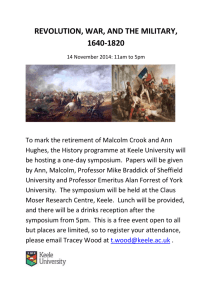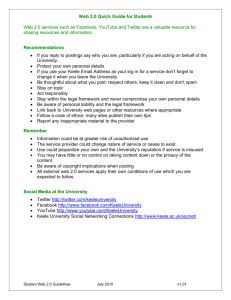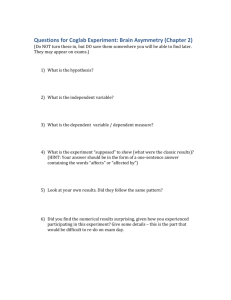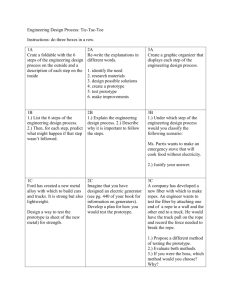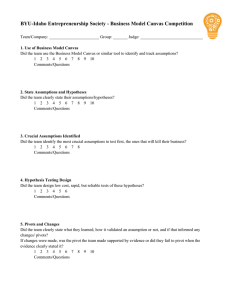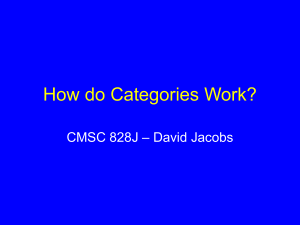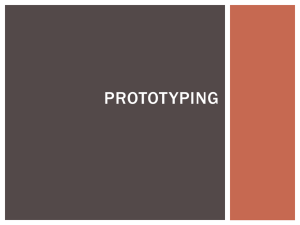Prototype
advertisement
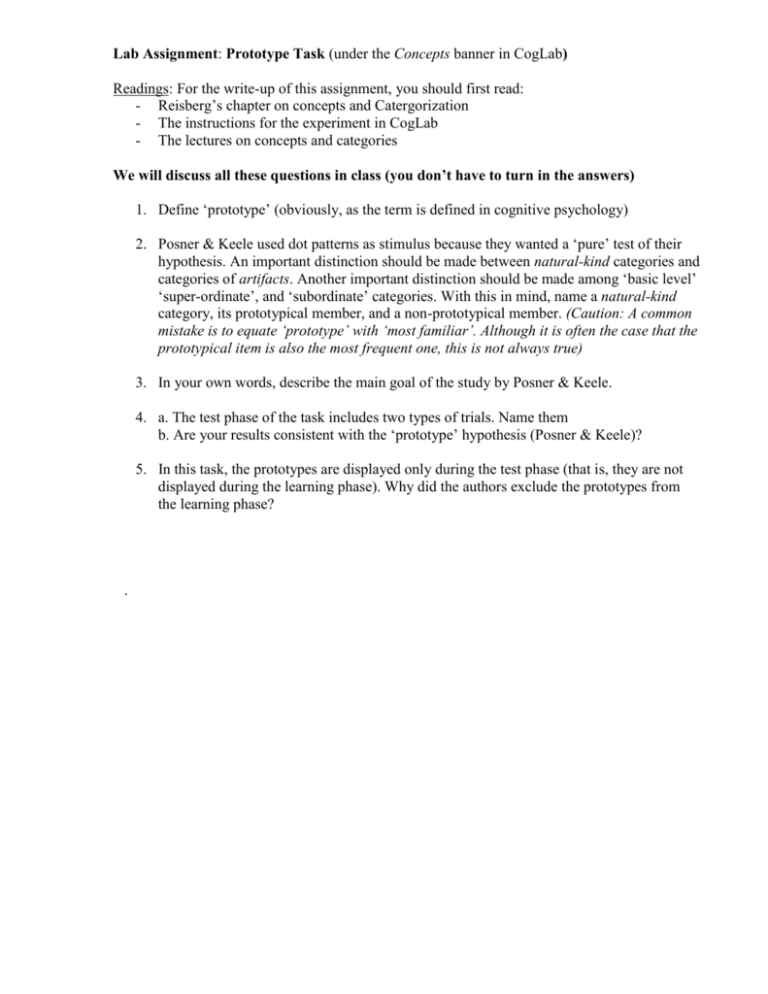
Lab Assignment: Prototype Task (under the Concepts banner in CogLab) Readings: For the write-up of this assignment, you should first read: - Reisberg’s chapter on concepts and Catergorization - The instructions for the experiment in CogLab - The lectures on concepts and categories We will discuss all these questions in class (you don’t have to turn in the answers) 1. Define ‘prototype’ (obviously, as the term is defined in cognitive psychology) 2. Posner & Keele used dot patterns as stimulus because they wanted a ‘pure’ test of their hypothesis. An important distinction should be made between natural-kind categories and categories of artifacts. Another important distinction should be made among ‘basic level’ ‘super-ordinate’, and ‘subordinate’ categories. With this in mind, name a natural-kind category, its prototypical member, and a non-prototypical member. (Caution: A common mistake is to equate ‘prototype’ with ‘most familiar’. Although it is often the case that the prototypical item is also the most frequent one, this is not always true) 3. In your own words, describe the main goal of the study by Posner & Keele. 4. a. The test phase of the task includes two types of trials. Name them b. Are your results consistent with the ‘prototype’ hypothesis (Posner & Keele)? 5. In this task, the prototypes are displayed only during the test phase (that is, they are not displayed during the learning phase). Why did the authors exclude the prototypes from the learning phase? .

